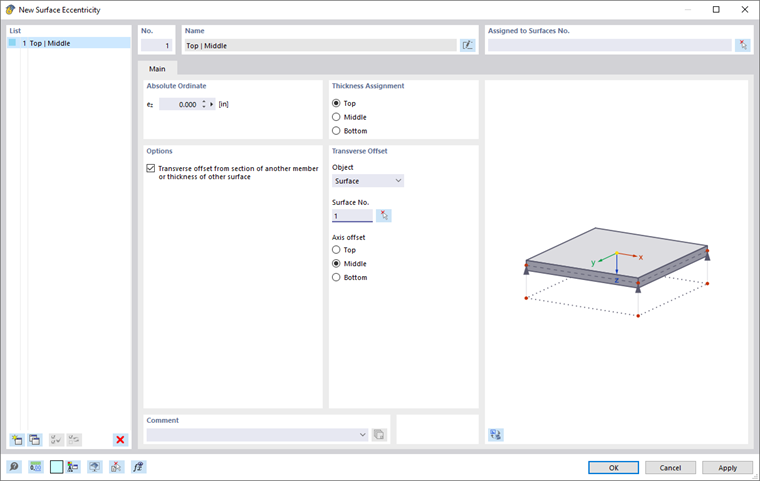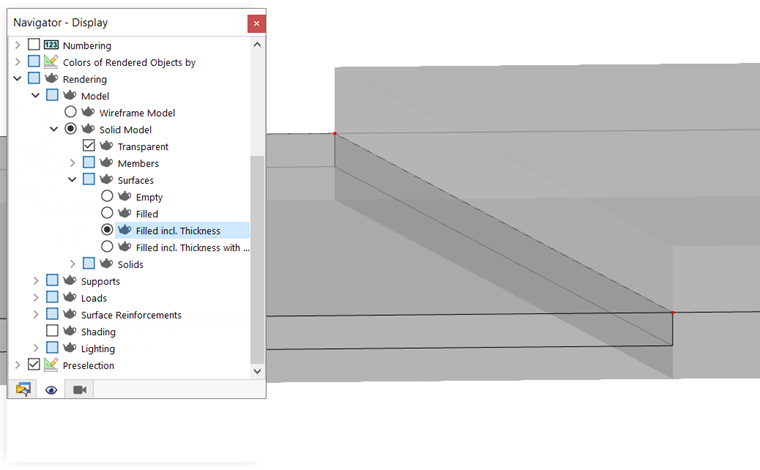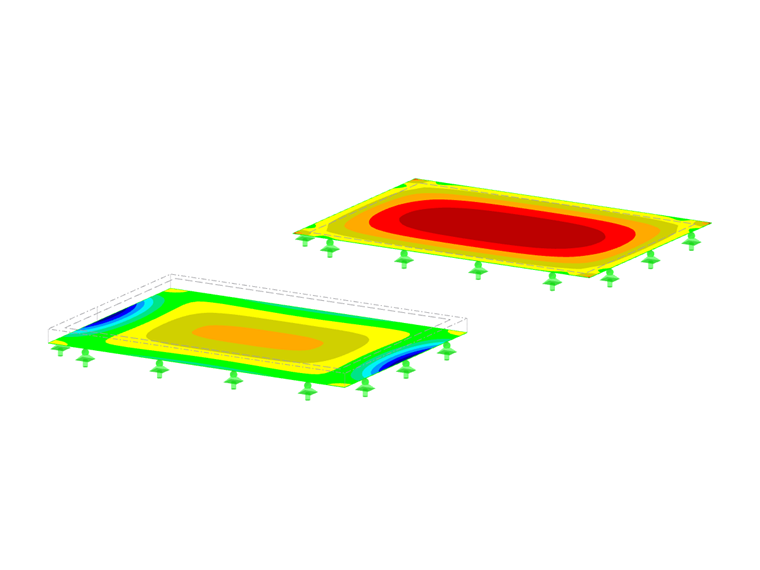In RFEM, surface models are related to the center lines of the surfaces (centroidal plane). The thicknesses are defined in the stiffnesses, but not in the geometry. When surfaces are connected to each other in an offset position, you can connect them eccentrically by means of surface eccentricities. Thus, surfaces with different thicknesses can be connected flush.
Absolute Ordinate
You can define the surface eccentricity both in absolute values and relative to other objects. Both entries are added together. The value ez expresses the distance from the surface center line in the direction of the positive z-axis.
Thickness Assignment
Use the check boxes to define the point of the surface where the eccentricity is applied. The surface will be moved by this distance from the centroidal plane.
If you select the point at the top edge as shown in the image New Surface Eccentricity, a floor slab is connected with its upper side, for example, to a rising wall.
Options
A "Transverse offset" arranges the surface at a certain distance to the cross-section of a connected member or the thickness of a parallel surface. After activating the check box, you can define the parameters in the Transverse Offset dialog section.
Transverse Offset
Specify in the list from which "Object"—a member or a surface—the distance is to be determined. Then, enter the number of the member or surface, or select the object graphically using the
![]() button.
button.
Create an "Axis offset" using the check boxes: This point of the object represents the control point of the member or surface where the surface is positioned. It determines the distance of the surface from the object.


